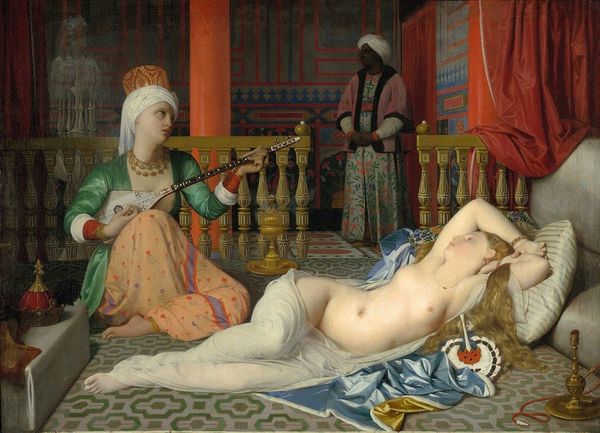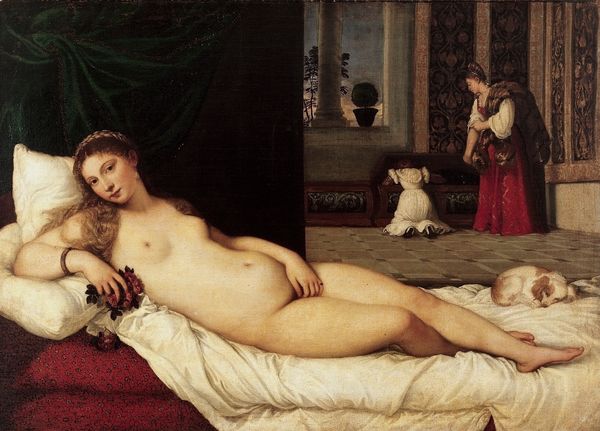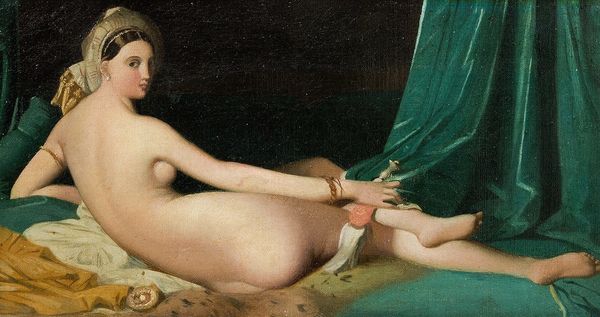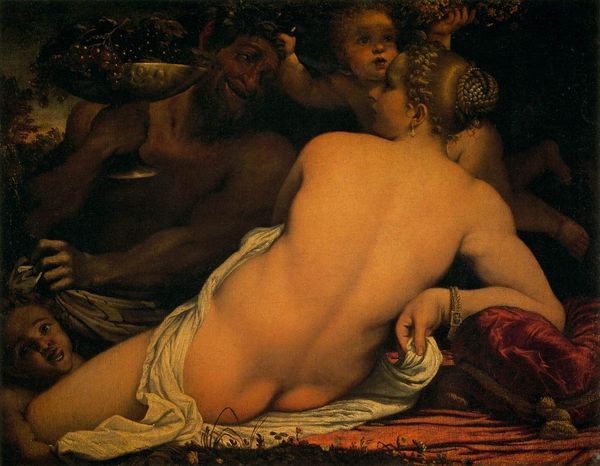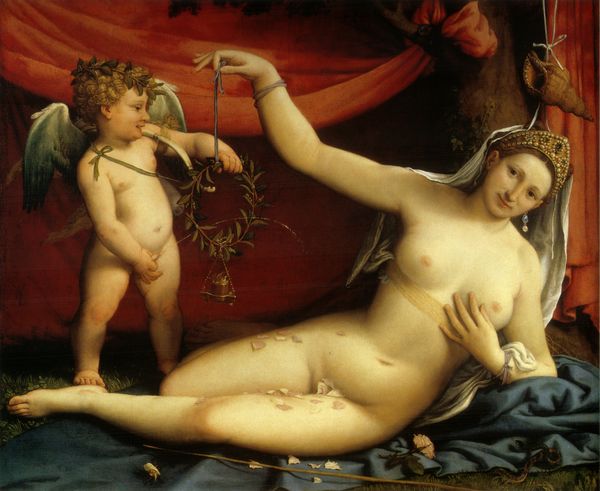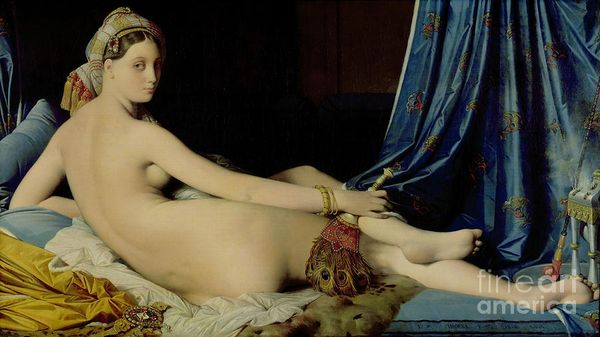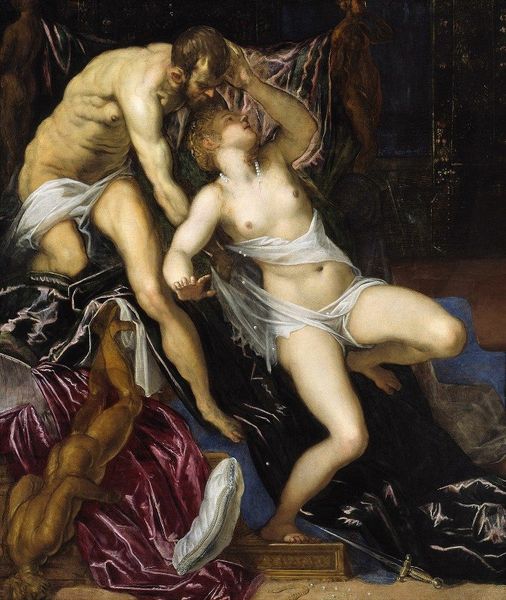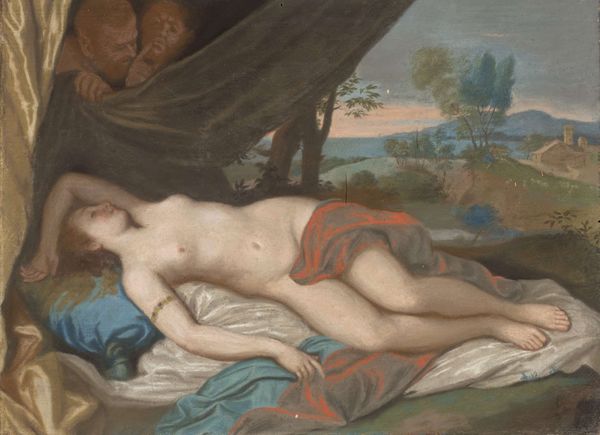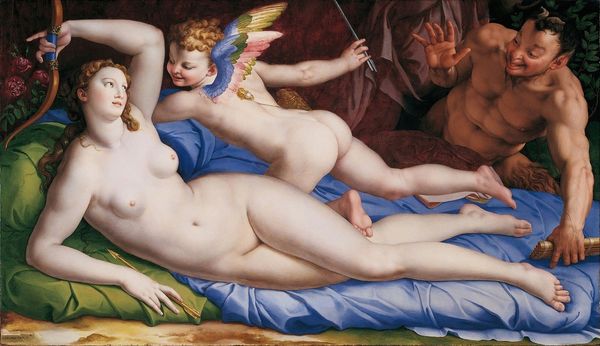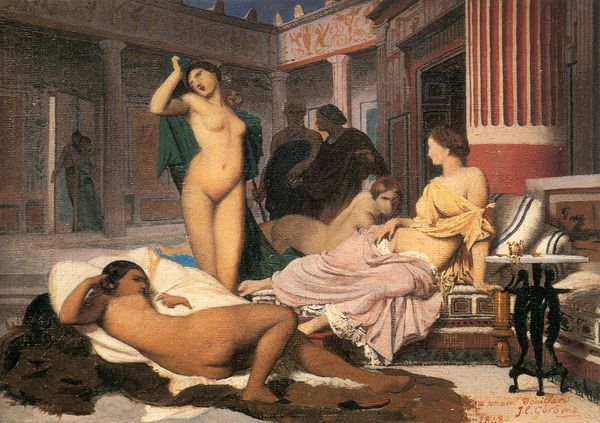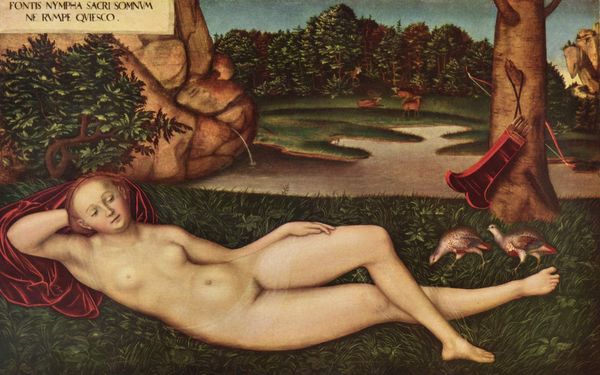
painting, oil-paint
#
portrait
#
painting
#
oil-paint
#
romanticism
#
orientalism
#
mythology
#
painting painterly
#
painting art
#
history-painting
#
nude
Dimensions: 105 x 76 cm
Copyright: Public domain
Curator: Let’s discuss Jean-Auguste-Dominique Ingres' "Odalisque with Slave," an oil on canvas he completed in 1842. It currently resides at the Walters Art Museum. Editor: Wow, what strikes me first is the almost surreal calm. It’s like floating in a perfumed dream, where colors and textures soften around the edges. A kind of beautiful, suffocating opulence. Curator: Absolutely. The painting is emblematic of the Orientalist style prevalent during that period, and delves into themes of exoticism, power dynamics, and the male gaze. Think about the broader social contexts—the colonial ambitions that shaped such depictions. Editor: It definitely feels constructed, you know? That odalisque is positioned for display, an object of visual pleasure. And yet, there's something melancholic about it. Almost as if even in this languid luxury, she's trapped, watched over, part of a curated scene. Curator: Precisely. We have to critically consider Ingres’ construction of otherness. The passive reclining figure contrasts starkly with the Black figure, presented as stoic, impassive, adding another layer to the tableau's complex dynamics. There's this layering of power—who is seen, who is unseen, who holds the gaze. Editor: That musician seems stuck too though. Her music seems like a lament, mirroring the odalisque's captive state. She plays on and on in the service of someone else's luxurious, idle existence. It's kinda heavy if you look at it like that. Curator: And we can even explore how feminist theory illuminates the ways women were often represented – as objects of desire. Consider how these images then influence our understanding of beauty and female agency today. Editor: It leaves me feeling a bit unsettled. Such beauty paired with so much potential imbalance. Like, you can’t help but see the history tangled up in those silks and shadows. Curator: Understanding this historical perspective provides the basis for meaningful contemporary dialogues on representation and cultural appropriation. Editor: Yeah, I am glad paintings like these are around. They’re pretty, sure, but you walk away asking the right kinds of tough questions. You kinda have to look twice—see more than just the pretty surfaces.
Comments
No comments
Be the first to comment and join the conversation on the ultimate creative platform.

